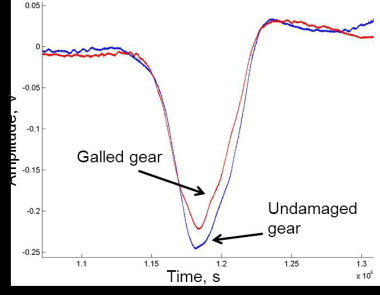Gas turbine operators can learn from wind gearbox problems

The incursion of renewables into the mainstream was the main topic of discussion at the recent Turbo Expo 2013 that took place in San Antonio, Texas. The subject invoked many comments during the conference which was sponsored by ASME's International Gas Turbine Institute (IGTI). The event was attended by more than 3000 participants and it featured over 1000 presentations and 46 different subjects.
Several speakers addressed topics such as how to improve grid reliability when the wind and solar account for large portions of total power, how to improve steam turbine design to make them perform better in a renewable-rich grid, and how to measure and predict wind gearbox failures.
IGTI instituted a wind turbine track a couple of years ago and the number of wind sessions continues to grow. Jonathan Sullivan of the Department of Engineering Science at the University of Oxford spoke about the significance of wind turbine gearing, which could have wide applicability to gas turbine operators in the future.
At high speed, scuffing and surface roughness begin to take effect. At high load, on the other hand, bending fatigue and fracture are the more common issues, while at low speed and low to medium load you see adhesive and abrasive wear. Sullivan has been analyzing how eddy current measurement can be used to predict component health across the entire gearbox and isolate these degradation factors in their early stages.
Sullivan said, "Eddy currents are very good at detecting the interface between two surfaces. You don't want the signal to vary between gears, for example." His team has developed a plastic idling gear that can be placed over an actual gear. It contains the sensors for measuring eddy currents. But these sensors can also be placed in other ways without the need of a plastic overlay.
The University of Oxford has assembled a test rig to check radial and axial movement of gears as well as pitch and yaw alignment. You can check two identical teeth on connecting gears, for example, to measure if they are rotating at exactly the same speed, detect any gaps between meshing gears and find cracks in the root of the gear. "These irregularities can't be seen with the eye and don't affect power output; yet eddy currents can detect them and this can potentially be used to prevent catastrophic failure in the future," said Sullivan.
He gave the example of small cracks isolated on an eddy current graph. As you continue at light load, the crack develops and finally leads to a broken gear tooth, 50,000 cycles later. "I don't believe there are any other technologies that will provide this type of failure prediction," said Sullivan.
Read full article in the July/August issue of Turbomachinery International Magazine.
Fuel Flexibility in Heavy-Duty Gas Turbines: A Key Driver for Energy Transition
March 13th 2025From Hydrogen to HVO, Mr. Federico Bonzani, Chief Technology Officer of Ansaldo Energia, describes the fuel flexibility state-of-the-art solutions of the Company to meet the actual and future needs of power generation industry.